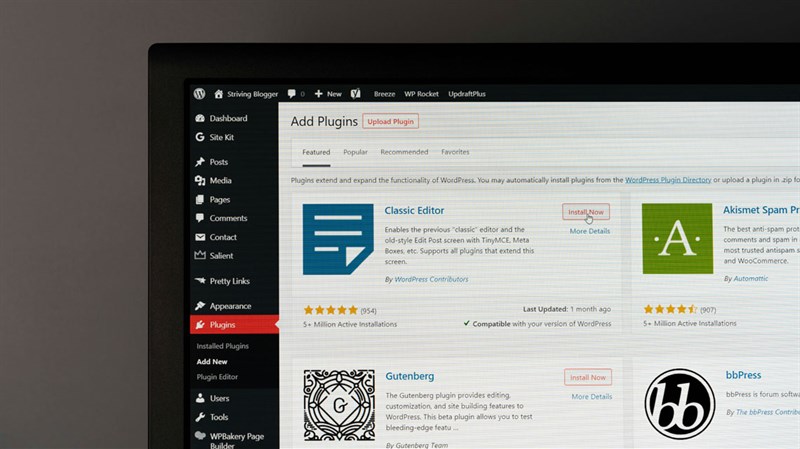
Our ultimate guide to ecommerce replatforming
Ecommerce replatforming projects are part and parcel of running a successful and growing online store, but selecting the right platform can make a huge difference in how often, if, and when that needs to happen. As ecommerce takes on more and more importance, they’re also a prime opportunity to look at streamlining your wider business processes, integrating with other systems, reducing resources through automation, and increasing operational efficiency.
In this article, we’ll look at some of the triggers for why and when you should replatform, how to go about it, what to look for - or be wary of - in a new platform as well as answering some common questions around the replatforming process.
Why should you replatform?
Many platforms that are great for businesses starting their online journey, like Shopify, Magento or BigCommerce for example, are not able to support your business as it scales and expands. It’s not long before they start to show the strain as the functionality is restrictive (often lacking key features or relying on clunky, resource-hungry plugins for standard functionality), there’s lots of manual processing and site performance becomes poorer. At best, this is frustrating, at worst, it begins to impact your bottom line, erode your brand’s reputation, and increase customer dissatisfaction.
Most of these basic platforms are also unable to properly support the strategic growth of your business online, whether that is adding additional brands, new sales channels (B2B, Retail or D2C) or expanding internationally with localised sites. In contrast, platforms like tradeit have been specifically designed to scale in line with your business.
Take Amoena for example, they started with one site, but have now expanded to both B2B and D2C with 29 different sites across numerous international channels from a single installation of tradeit. This wouldn't have been possible on some platforms so would have required an expensive and time consuming replatforming project.
Or Pet Family, who found Magento 2 unable to meet their requirements. They started with one new B2B site but have now expanded to include numerous D2C brands across multiple international territories (with subscriptions capability), all from one instance of tradeit. It’s this flexibility and scalability that makes tradeit such a strong option for growing businesses as additional sites can be deployed quickly with very low costs. This makes management of the sites easy, and ensures they never outgrow the platform.
When should you replatform?
Replatforming is often driven by the limitations of your existing platform, or a tactical requirement that it can’t fulfil. Here are some of the reasons why you may want or need to replatform.
Functional/Technical
As we’ve already highlighted the platform that you have used to begin your online journey may no longer be right to help your growth. Many of the platforms that are great for start-ups just aren’t able to scale to support your expansion. They also lack the functional tools to drive significant growth and help you outperform your competitors.
For example, the site might be slow or have limited capacity on products, attributes or prices. It might fall over during peak traffic. There might be glaring functional holes, that can only be filled by limited and costly 3rd party apps, or just not filled at all. The more apps you need to add to enhance the functionality, the more your site’s performance suffers. It all becomes a bit unwieldy to manage too. If something goes wrong with the site, whose fault is it? The platform? The agency who built it? The 3rd party app developer or developers? Has one app caused another to break? Getting to the root of the problem can often be very frustrating and time consuming.
Functional limitations are often the most common reason to replatform as they are one of the most obvious areas where your business is being held back, but it’s often difficult to compare the exact functionality of different platforms. We’ve outlined some of the headline differences between tradeit and other common platforms to show you some of the key differences.
Financial
The cost of maintaining or enhancing your existing platform is often not cost effective. It can start to feel like throwing good money after bad paying to just maintain the status quo. It might cost you money in the short-term to move platform but the ROI should be far greater than your existing platform because of the removal of limitations and the possibilities for growth. The money you spend is driving innovation and growth, rather than just paying to keep things working. On the opposite side is paying for a solution that far exceeds your requirements, where you are spending money on features that you don't need or use.
Some projects might be tactical, where the cost and time of launching new channels on unwieldy enterprise platforms is often prohibitive (particularly if testing new markets or brands), so those projects are launched on a more nimble solution. This can often end up being a complete replatforming project away from the clunky and overpriced enterprise solution.
Structural
Your business may have acquired another business or businesses, or may have been acquired itself, which can lead to the consolidation of technologies. If the separate businesses are operating on different platforms, this might mean all sites moving to one of the existing ones, or it might mean selecting a new platform that can support multiple businesses going forward.
This more complex arrangement might mean moving to a platform that can support multiple brands, business types and channels which some of the more basic systems struggle with, particularly if you need to share or limit access across multiple international channels, all in different languages.
Agency and/or platform are slow to respond
Sometimes replatforming may be necessary as a result of the lack of innovation by the platform, or an unresponsive agency. Unlike tradeit, most platforms rely on third party developers or agencies to deliver their solutions. The quality and capability of these agencies can vary wildly and that can have a serious consequence on the performance, development and maintenance of your site.
Alternatively, you could be forced to replatform if your existing platform is decommissioned as was the case when Adobe infamously ceased support for their Magneto 1 product in June 2020. This meant all development and security updates stopped, despite thousands of customers still using this technology. This either forced users to replatform (the move to Magento 2 is still a full replatforming project) or remain on an unsecure platform. Cynics might argue it was a calculated move to force them to upgrade.
As tradeit is developed, supported and maintained in house we have complete control over the features and road map of the platform, which can be extended, modified, personalised and supported to meet any client’s exact requirements giving you a single point of contact for your ecommerce technology. Agencies that build on other platforms like BigCommerce, Shopify or Magento don’t have any influence on the direction of those platforms and which functions they develop.
The often-cited benefit of being able to just change agency and carry on with another that builds on the same platform, is not a practical reality. Most agencies would look to redesign and rebuild a site, rather than just maintain one that somebody else has delivered but isn’t supporting properly.
What should you look for in a new platform?
Once you've decided that you need to replatform, there's some things that you need to understand and evaluate when selecting a new platform.
Inherent functionality vs apps/plugins/extensions
On the face of it apps seem a great way to extend your platform’s functionality. There’s plenty of choice, they’re quick to deploy, often relatively inexpensive and cover a number of functional areas. However, not all that glitters is gold. As we've already stated there's many issues with relying on apps/plugins/extensions for functionality:
- Apps can be resource-hungry. they're not part of the platform's core code and get layered on top of each other so they slow your site down and affect its performance. Site speed is one of the biggest barriers to conversion, so the slower your site the less likely it is to convert.
- They're usually built by a third party, rather than the platform developers, so aren't tested in every combination or situation.
- They're built to work one way and one way only. They're completely inflexible so you end up with something that works how it does, rather than exactly how you want it to.
- The more apps you use, the more there is to maintain.
- As they are built by a third party, they are often left unsupported. If that happens how do you maintain the functionality? How do you replace them? Do you end up constantly going through numerous apps to get the same functionality?
- As they are often billed monthly, the seemingly low cost can quickly mount up the longer you use them.
- Platform updates are known to break apps. If an app breaks during an update, the platform provider often gives the app developer 9 months to update it. That means you could be left without functionality for 9 months! If it’s not fixed by then, it becomes unsupported and can stop working as expected.
- Not all apps are built to work on every store so that will limit your choice. Not only that, sometimes you may have an app installed that becomes incompatible with your store and stops working. Hardly ideal.
- Apps will often be removed from the store without warning customers, so if you are running them and uninstall them for any reason (Uninstalling and reinstalling is often used as a fix to get them working when they are unresponsive) they will no longer be available. Some platform errors have been known to uninstall ALL apps, again causing problems if you have an app that has been discontinued.
All functionality in tradeit is inherent to the platform and has been built specifically from the ground up to support both retail and B2B ecommerce out of the box. It’s not a retail platform that has had some B2B functions tacked on to it like Magento, WooCommerce, Shopify or BigCommerce.
There’s also no third party developers, who don’t know the platform intimately, building features. There’s no apps, plugins, extensions or bolt-ons to provide additional functionality too. The feature set of tradeit is vast, but in the rare cases where a customer needs something specific it can be delivered for them as part of their installation and look & work exactly how they want.
Themes vs custom design
Many of the more basic platforms use pre-built themes to provide you with an out of the box design that is ready to go. This makes deployment quick as you just add your content (logo, text, images etc...), choose colours and fonts and off you go. However, there are some drawbacks to this approach. As the themes are widely available and free, or resold for a relatively small amount, your design is almost identical to hundreds or thousands of other ecommerce sites. When you factor in that they're also running on the same platform with the same functionality, it's difficult to stand out. The components that you can add content to are also limited so the flexibility of designs is further restricted as a result. If your competitors use the same platform and theme, it will be impossible to stand out from them.
tradeit sites are designed and built around your exact brand requirements providing much more flexibility than a theme where your just fit your content into the existing design of whatever you, or your agency, have chosen.
Integrations
Integrations tend to be a standard part of most ecommerce builds and as such they are of huge importance to the success of any replatforming project. The quality of integration work is one of the key areas where agencies can distinguish themselves from each other, particularly if they build on the same generic platforms.
It's important to ensure you understand the integration capabilities of the agency you work with. Which systems have they integrated with? What's the depth and complexity of those integrations? What types of integration have they carried out (Web Services, TAB, XML, CSV etc...). Can they provide integration references?
Data Migration
Data migration is an often overlooked element of any ecommerce replatforming project, but is extremely important. Getting your data across to your new site as seamlessly as possible is vital to a smooth transition.
What needs migrating may well depend on what information is being integrated from your back office system with your new website. For instance, if product information is being populated from your ERP system, then you wouldn’t need to migrate that data, as it would just be pulled into the new site from the ERP and the two systems would be kept in sync.
In some instances, you may well need to migrate order information and order history to your new site so it's available to your customers. However, for many B2B sites, this, along with online invoicing, might be pulled via web services from your back end system so it’s available in real time, meaning it doesn’t need to be migrated. This also enables you to display offline orders to customers in their online account as they are pulled from your ERP.
User information will most likely need to be migrated, so customer name, delivery address(es), and passwords will have to be imported to your new site. Many providers won't offer any type of data migration service so you’ll either need to do it yourself, or pay another third party to carry out the task for you so be sure to check when approaching a replatforming project. You'll also need to factor in any additional cost this might incur.
Security
Security is absolutely vital to your online presence and the penalties for breaches can be extremely severe, both financially and to your reputation. It’s critical in protecting customer data, preventing fraud, averting malicious attacks and retaining trust.
Platforms like Magneto have suffered numerous security breaches over the years with thousands of sites attacked leaving merchants and their customers exposed to serious risk. So make sure you check the security credentials of any platform, PCI credentials, hosting infrastructure, SSL certification etc...
SEO
Ensuring your existing traffic follows you to a new platform is absolutely crucial to maintaining and growing your business. Make sure your new platform has full control of your on-page elements such as page titles, meta page titles, meta tag keywords, meta description, h1-h6, proper output of image tags etc…
The tradeit ecommerce platform is designed for optimum SEO performance and flexibility, helping you out rank your competitors and easily transition from your old platform. The simple interface provides full control over on page elements, URL structures, rich snippets, schema.org and twitter cards, as well as complete management of all links and re-directs ensuring your site can be found by both search engines and users alike.
How long does an ecommerce replatforming project take?
Whilst an ecommerce replatforming project is essentially the same thing (changing ecommerce platform), the breadth and scope of a project can vary significantly depending on the customer's requirements. Thus the time it takes can also fluctuate wildly. In its most simple form, moving onto a hosted solution like Shopify, with no integrations, no 3rd party apps, a standard theme and no customisations could be relatively quick.
However, at the other end of the scale, a move onto a more advanced platform with multiple channels, numerous integrations, bespoke customisations, unique workflows, a customised design, and stringent testing will likely run to many, many months or perhaps even longer. The speed of delivery will also rely on a number of factors including the responsiveness of the client and the competence of any integration partners.










